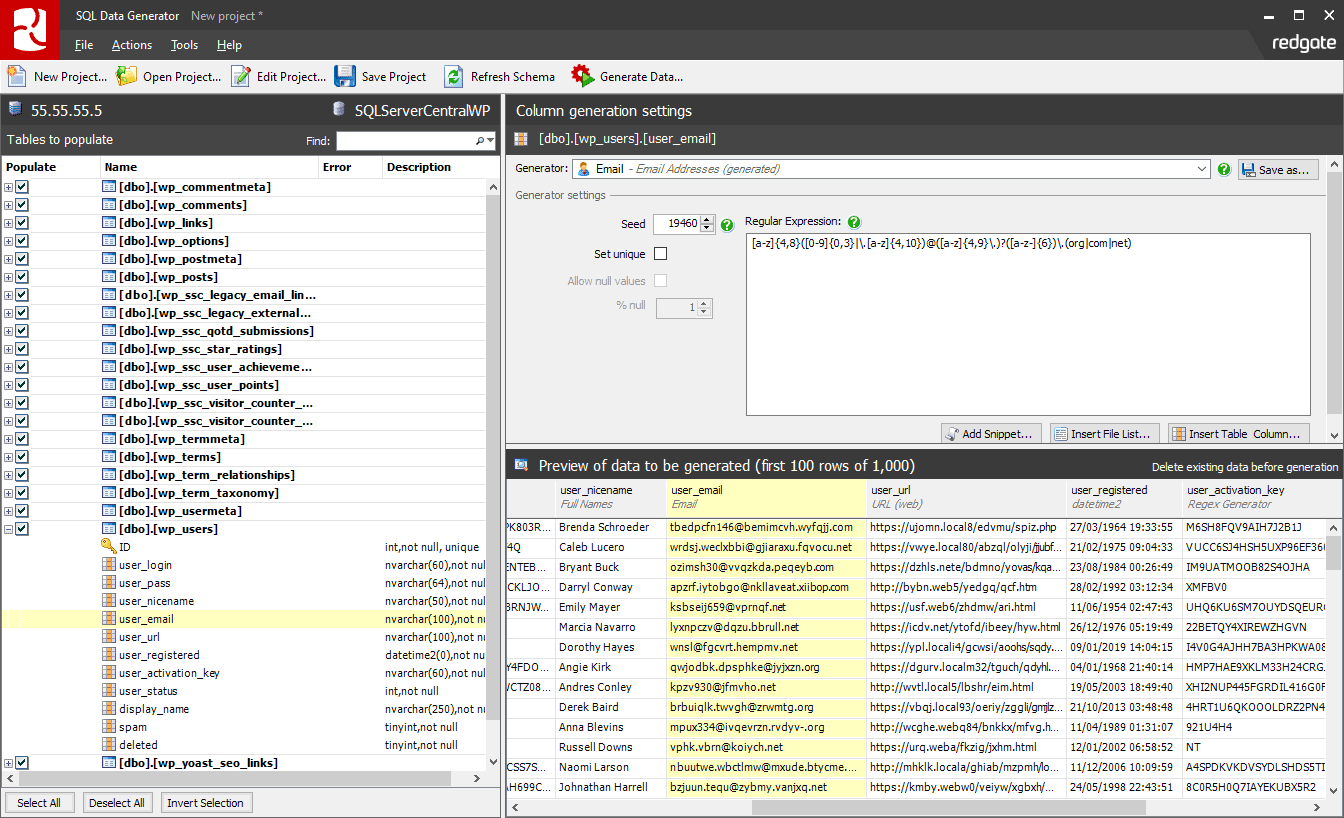

We can see a couple of different Bogus datasets being used in this example, like Name, Address, Internet and Lorem. RuleFor(e => e.Personality, f => f.PickRandom())Īgain, in the GetEmployeeGenerator() method, we create a new Faker object which we will use later for creating fake employees. RuleFor(e => e.AboutMe, f => f.Lorem.Paragraph(1)) RuleFor(e => e.Email, (f, e) => f.Internet.Email(e.FirstName, e.LastName)) RuleFor(e => e.Address, f => f.Address.FullAddress()) RuleFor(e => e.LastName, f => f.Name.LastName()) RuleFor(e => e.FirstName, f => f.Name.FirstName()) NET/C# content and get paid? > JOIN US! GetEmployeeGenerator()
FAKE USER DATA GENERATOR CODE
Wanna join Code Maze Team, help us produce more awesome. Of course, a different field has different rules in this case: We specify a different rule for each field of the Vehicle class, with the RuleFor() method. In the GetVehicleGenerator() method, we create a new Faker object from Bogus, which accepts a generic class for which we are specifying the rules, in this case, the Vehicle class. RuleFor(v => v.Fuel, f => f.Vehicle.Fuel()) RuleFor(v => v.Manufacturer, f => f.Vehicle.Manufacturer()) RuleFor(v => v.EmployeeId, _ => employeeId) NET/C# content and get paid? > JOIN US! GetVehicleGenerator(Guid employeeId) We now have our employees with vehicles, but we only have classes.

In both Employee and Vehicle classes, we override the ToString() method to serialize and indent our data, to display it nicely later in the article.


 0 kommentar(er)
0 kommentar(er)
